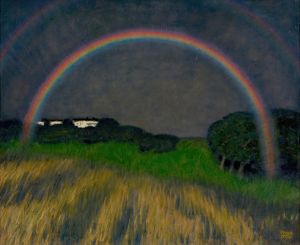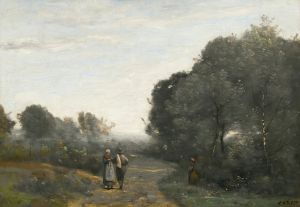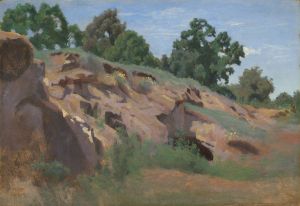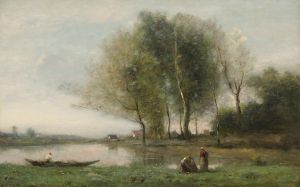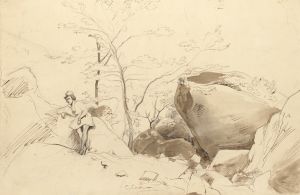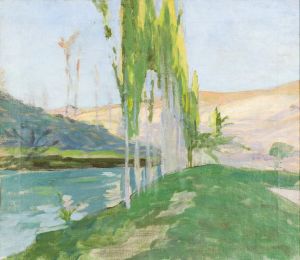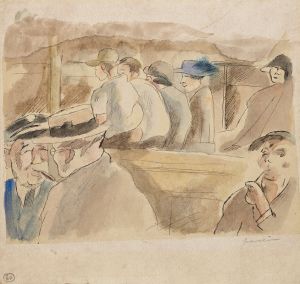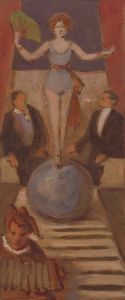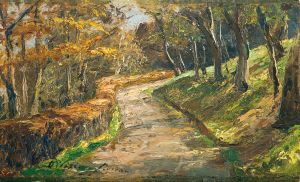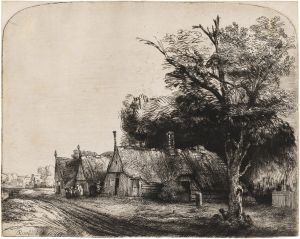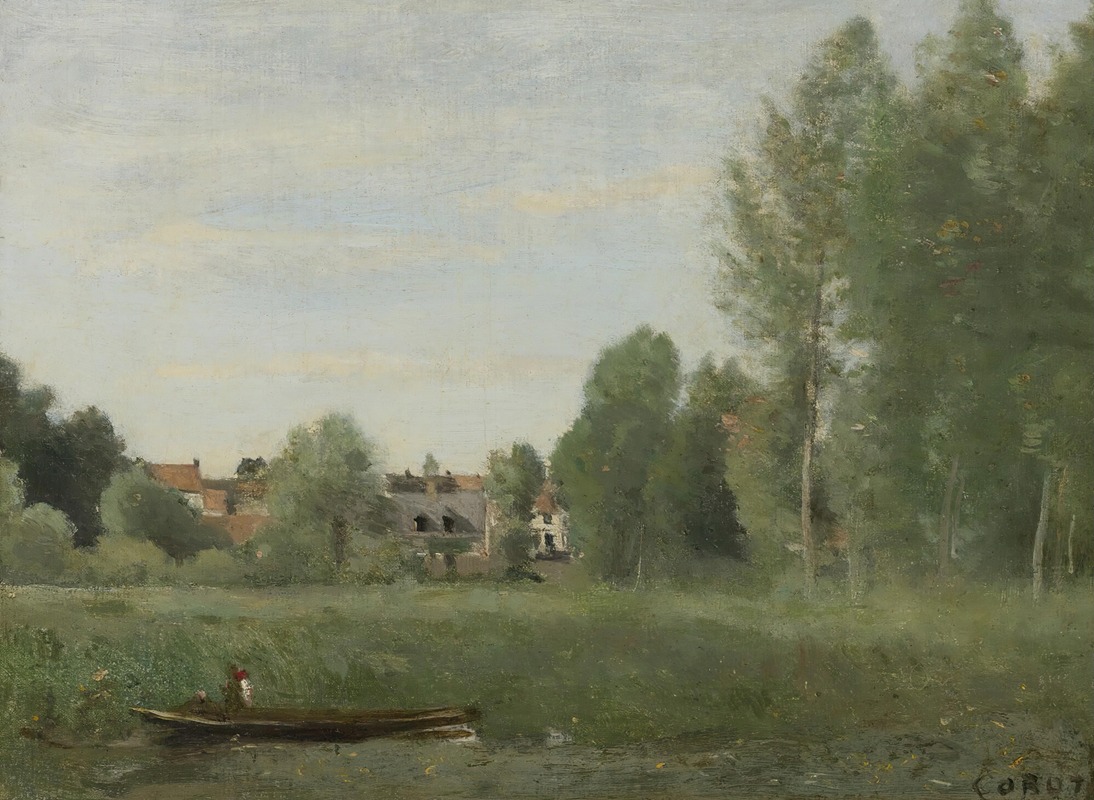
Environs De Mantes, Petites Habitations Cachées Dans Les Arbes Près Du Bord De L’eau
A hand-painted replica of Jean-Baptiste-Camille Corot’s masterpiece Environs De Mantes, Petites Habitations Cachées Dans Les Arbes Près Du Bord De L’eau, meticulously crafted by professional artists to capture the true essence of the original. Each piece is created with museum-quality canvas and rare mineral pigments, carefully painted by experienced artists with delicate brushstrokes and rich, layered colors to perfectly recreate the texture of the original artwork. Unlike machine-printed reproductions, this hand-painted version brings the painting to life, infused with the artist’s emotions and skill in every stroke. Whether for personal collection or home decoration, it instantly elevates the artistic atmosphere of any space.
Jean-Baptiste-Camille Corot was a pivotal figure in 19th-century French painting, known for his landscapes that bridged the gap between the neoclassical tradition and the plein-air innovations of the Impressionists. One of his notable works, "Environs De Mantes, Petites Habitations Cachées Dans Les Arbes Près Du Bord De L’eau," exemplifies his mastery in capturing the serene beauty of the natural world.
This painting, whose title translates to "Surroundings of Mantes, Small Houses Hidden in the Trees Near the Water's Edge," is a testament to Corot's ability to blend realism with a poetic sensibility. Created during the mid-19th century, the work reflects Corot's frequent travels to the countryside around Mantes-la-Jolie, a town located northwest of Paris along the Seine River. This region provided a rich source of inspiration for Corot, who was deeply influenced by its tranquil landscapes and the interplay of light and shadow.
In "Environs De Mantes," Corot employs a soft, muted palette that is characteristic of his mature style. The painting depicts a peaceful scene where small houses are nestled among lush trees, with a gentle body of water nearby. The composition is balanced and harmonious, with Corot's delicate brushwork capturing the subtle variations in light and texture. The trees, rendered with a combination of broad strokes and fine details, create a natural canopy that partially conceals the dwellings, suggesting a sense of seclusion and tranquility.
Corot's approach to landscape painting was innovative for his time. Unlike many of his contemporaries who favored dramatic and idealized scenes, Corot focused on capturing the essence of a specific place and moment. His work often conveys a sense of immediacy and intimacy, inviting viewers to experience the quiet beauty of the natural world. In "Environs De Mantes," this is achieved through the careful composition and the interplay of light, which imbues the scene with a gentle luminosity.
The painting also reflects Corot's interest in the relationship between humans and nature. The small houses, almost hidden within the trees, suggest a harmonious coexistence with the environment. This theme is recurrent in Corot's work, where human presence is often understated, allowing the landscape to take center stage.
Corot's influence on later artists, particularly the Impressionists, is well-documented. His emphasis on capturing the transient effects of light and atmosphere paved the way for artists like Claude Monet and Camille Pissarro, who expanded on these ideas in their own work. "Environs De Mantes" is a prime example of how Corot's landscapes served as a bridge between traditional and modern approaches to painting.
Today, Corot's works are celebrated for their timeless beauty and technical skill. "Environs De Mantes" remains an important piece within his oeuvre, illustrating his unique ability to convey the serene and contemplative qualities of the French countryside. Through his art, Corot invites viewers to pause and appreciate the subtle beauty of the world around them, a legacy that continues to resonate with audiences today.





